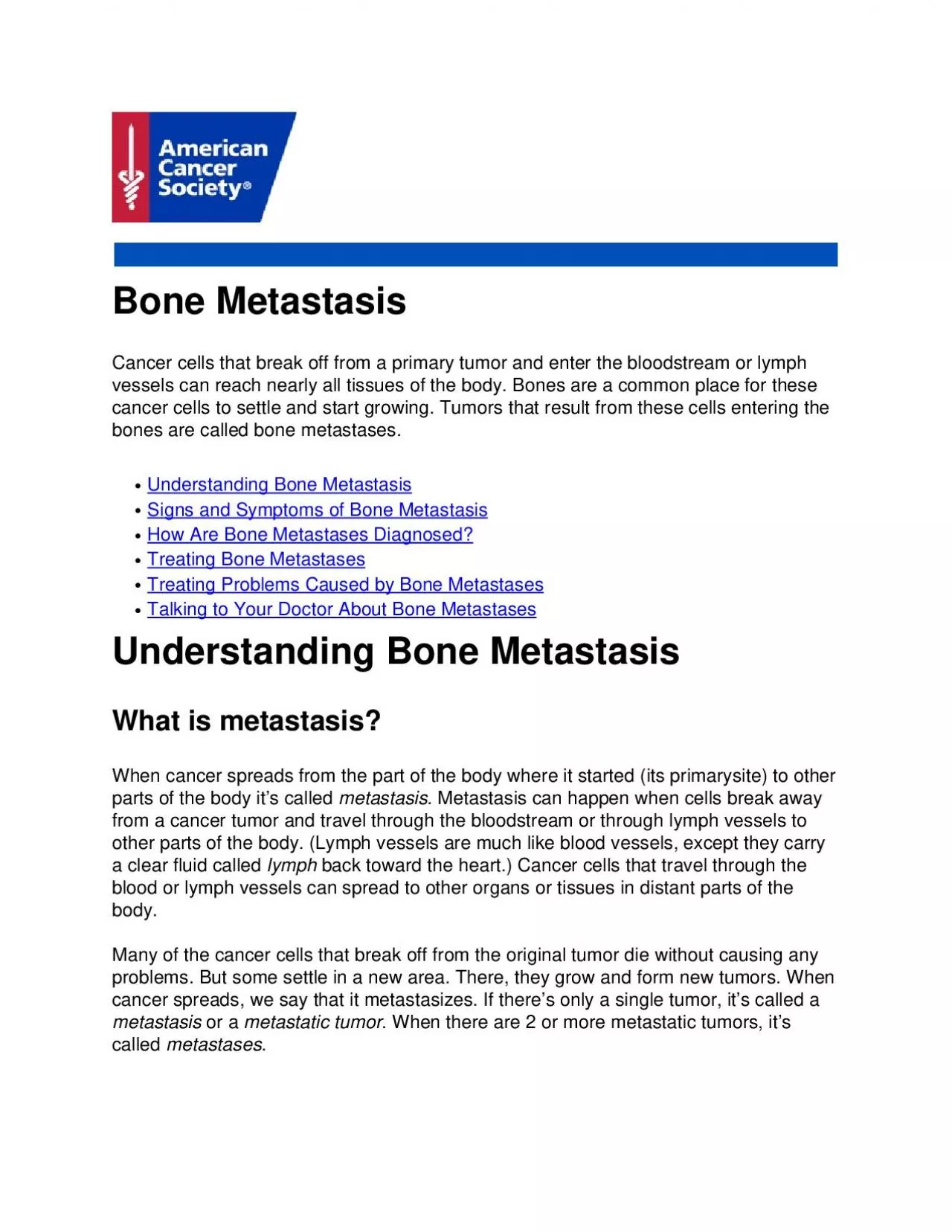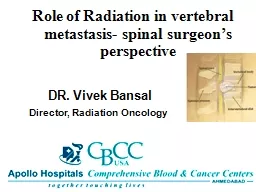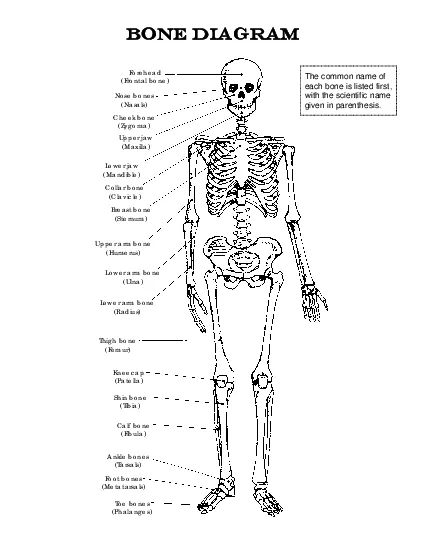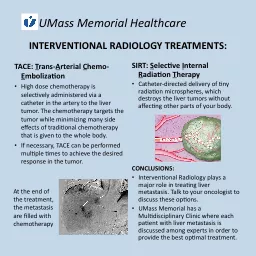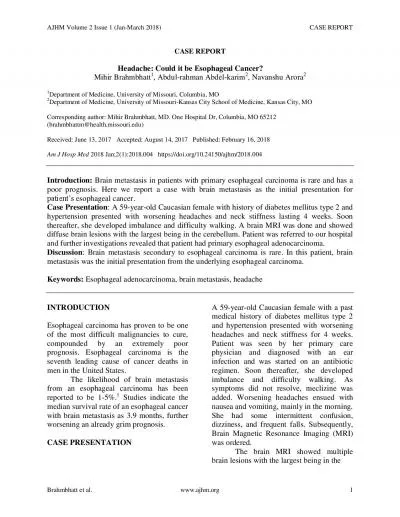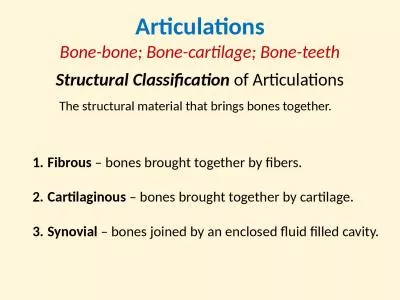PDF-Bone Metastasis
Author : maisie | Published Date : 2022-09-01
Cancer cells that break off from a primary tumor and enter the bloodstream or lymphvessels can reach nearly all tissues of the body Bones are a common place for
Presentation Embed Code
Download Presentation
Download Presentation The PPT/PDF document "Bone Metastasis" is the property of its rightful owner. Permission is granted to download and print the materials on this website for personal, non-commercial use only, and to display it on your personal computer provided you do not modify the materials and that you retain all copyright notices contained in the materials. By downloading content from our website, you accept the terms of this agreement.
Bone Metastasis: Transcript
Download Rules Of Document
"Bone Metastasis"The content belongs to its owner. You may download and print it for personal use, without modification, and keep all copyright notices. By downloading, you agree to these terms.
Related Documents

